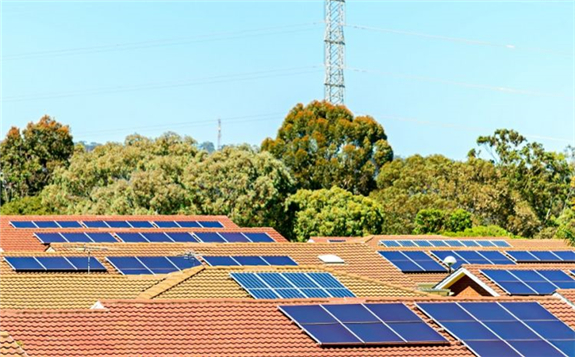Australia’s rooftop PV boom combined with changes in energy use due to COVID-19 drove electricity demand to record lows in three states during Q3.
 Australia’s Clean Energy Regulator suggests around 29% of Australian houses now feature rooftop PV. Image: istock/Getty.
Australia’s Clean Energy Regulator suggests around 29% of Australian houses now feature rooftop PV. Image: istock/Getty.
A new report by the Australian Energy Market Operator (AEMO) also shows that emissions fell to their lowest third-quarter levels in the country’s National Electricity Market, thanks in part to increased solar and wind output, while electricity prices tumbled year-on-year.
“The uptake of residential and commercial solar continues at record pace, which was largely responsible for new minimum operational demand records in Victoria, South Australia and Western Australia,” said Audrey Zibelman, AEMO CEO.
According to Australia’s Clean Energy Regulator, around 29% of Australian houses now have PV installed on their roofs, reaching as high as 42% in Queensland. The regulator suggests 2.9GW of additional rooftop capacity is set to be installed this year as people increase spending on home improvement.
AEMO's Q3 report shows distributed PV met 71% of South Australia’s total energy needs on 13 September, driving a new daytime minimum demand record of 379MW, which was 79MW lower than the previous record.
In Victoria, where coronavirus restrictions are starting to ease after more than 100 days of lockdown, a low of 3,073MW was achieved on 6 September, down 144MW on the previous record, with distributed PV accounting for 31% of underlying demand.
Across the NEM – which interconnects Queensland, New South Wales, Victoria, South Australia and Tasmania – average third-quarter operational demand decreased 1.4% year-on-year, mainly as a result of more rooftop PV.
According to Zibelman, mainland NEM wholesale electricity prices declined almost 50% compared to the same period last year, driven by lower demand, the improved reliability of coal-fired generators as well as additional renewables capacity.
“Grid‑scale solar and wind accounted for 14% of the generation mix, up from 12% in Q3 2019, due to increased supply coming into the system. Further, wind and solar output provided a record 35% of total generation on 27 September 2020,” she said.
While states such as Queensland and Victoria are planning additional investment in renewables to help drive the economic recovery from the pandemic, new utility-scale solar in Western Australia could be unnecessary in the coming years as rooftop PV displaces other energy sources.
A new roadmap for the state says the current 1.3GW of installed rooftop PV could increase to as much as 5GW in the next ten years. The report notes that the volume and density of rooftop PV in the grid provides an opportunity for large numbers of individual systems to be aggregated and coordinated to provide energy and essential system services.
In a move to overcome grid constraints caused by high levels of rooftop solar, the Australian Renewable Energy Agency is backing a pilot project that will test a flexible connection for up to 600 rooftop solar customers in South Australia and Victoria, allowing them to be paid for exported energy. The trial will deploy flexible connection technology that enables inverters to automatically adjust export limits every five minutes based on signals received from the distribution network.